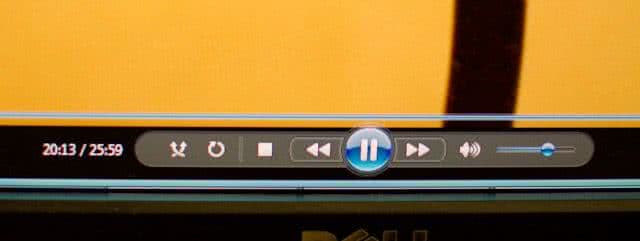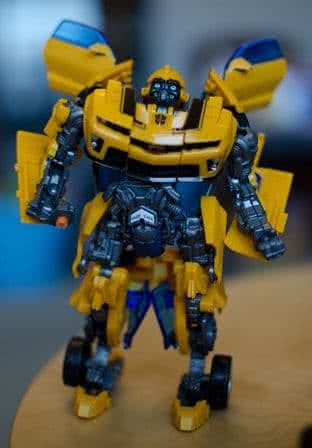I started looking at the J1/V1 firmware last weekend.
As compared to the DSLR firmware the XOR pattern is different, but using knowledge from the D5100 firmware, I made very quick progress getting past the first two XOR layers, the third was a little tricky.
Then yesterday, I got an email from Петр Кудинов that showed where in the D5100 firmware the XOR tables were stored. With this new insight (that they were stored verse calculated) I proceeded to search for what I had already found of the V1 XOR pattern in that firmware, and struck gold.
Here is the firmware based patterns used to decode the V1 and J1 firmware:
static byte[] Xor_Ord1_5 = {
0xBB, 0x85, 0x12, 0xA7, 0xD7, 0x11, 0x15, 0x30, 0x53, 0x5C, 0x72, 0xCA, 0x61, 0x9F, 0xA3, 0xAC,
0x2D, 0xC7, 0x05, 0x9C, 0xDF, 0x22, 0x37, 0xF5, 0x93, 0x6F, 0x24, 0x6B, 0x98, 0xB2, 0x0D, 0x44,
0x8B, 0xCD, 0x3D, 0x33, 0x65, 0xF3, 0xF7, 0x52, 0x89, 0xB7, 0x34, 0x26, 0x79, 0x8F, 0xC1, 0x84,
0x87, 0x07, 0x3A, 0xE2, 0xE0, 0x0C, 0xA1, 0xF0, 0xA0, 0x77, 0x4A, 0x7E, 0xFF, 0x25, 0xB6, 0x9D,
0x4F, 0x36, 0xF4, 0xC8, 0xA9, 0xA8, 0x70, 0x00, 0x99, 0xC3, 0x32, 0x2A, 0x1F, 0xDA, 0x9B, 0x64,
0xEA, 0xBA, 0x63, 0xC2, 0x23, 0xAF, 0xBF, 0x2C, 0x39, 0x16, 0x9E, 0x6D, 0xDC, 0x31, 0x02, 0x19,
0x2F, 0x47, 0xAE, 0xE3, 0x5B, 0x74, 0x0F, 0x71, 0xD4, 0xFE, 0x50, 0xD6, 0x3E, 0xD0, 0x18, 0xA4,
0xE8, 0x29, 0x80, 0x5A, 0x7D, 0xE5, 0x45, 0xE1, 0x62, 0x6C, 0xE6, 0xB5, 0x9A, 0x78, 0xA5, 0x7B,
0x03, 0x81, 0x27, 0xB0, 0x06, 0xF1, 0xE7, 0x8E, 0xD2, 0xD9, 0x1E, 0x3F, 0x5E, 0x95, 0xED, 0xFA,
0x20, 0x90, 0xEE, 0xFD, 0xDD, 0x4E, 0xDB, 0x6A, 0x82, 0x7A, 0x56, 0x1B, 0x8A, 0x1C, 0x09, 0x57,
0x6E, 0x2B, 0xE4, 0x04, 0xAB, 0x67, 0xDE, 0xF6, 0x1D, 0x2E, 0x46, 0x86, 0x8C, 0xCB, 0xB8, 0x14,
0x66, 0x10, 0xD1, 0xF2, 0x8D, 0x08, 0x54, 0xB4, 0x42, 0xF8, 0x49, 0xD5, 0x75, 0xBE, 0x76, 0x68,
0x51, 0x7C, 0xEF, 0x96, 0xCE, 0x0E, 0xE9, 0xEB, 0x41, 0x28, 0x59, 0xEC, 0xB1, 0x13, 0x91, 0x40,
0x0A, 0xCF, 0x5D, 0x01, 0xC9, 0x3B, 0xC0, 0xAA, 0x88, 0xC5, 0x92, 0x38, 0x4B, 0x5F, 0xD3, 0xA6,
0x69, 0xA2, 0x35, 0x58, 0xFB, 0xC6, 0x0B, 0x17, 0x7F, 0x21, 0x3C, 0x83, 0xBC, 0xCC, 0x4D, 0x97,
0xC4, 0x60, 0x48, 0xF9, 0xBD, 0x73, 0xB9, 0xB3, 0x1A, 0x55, 0xD8, 0x4C, 0xAD, 0xFC, 0x43, 0x94
};
static byte[] Xor_Ord2_5 = {
0xB6, 0x0A, 0x9C, 0xBF, 0x54, 0x5C, 0x80, 0x8F, 0xFE, 0x1E, 0xF9, 0x3A, 0x8C, 0xEA, 0x78, 0x2A,
0x01, 0xF7, 0x56, 0x38, 0x39, 0xE5, 0x72, 0xE6, 0x44, 0x0C, 0x41, 0x73, 0x82, 0x34, 0xCD, 0xC2,
0x14, 0x37, 0xC7, 0xBD, 0xD3, 0xF3, 0x29, 0xAA, 0x8D, 0xC5, 0xE4, 0xEB, 0x9D, 0xE9, 0xFB, 0xF1,
0x1F, 0x7D, 0x07, 0x93, 0x53, 0x95, 0x4A, 0x24, 0x05, 0x4D, 0xCE, 0x7E, 0x7F, 0x28, 0x22, 0xC8,
0x6E, 0x40, 0x55, 0xE3, 0x65, 0xC3, 0x3B, 0x0F, 0xE2, 0xDC, 0xED, 0xBC, 0x1B, 0x61, 0xEF, 0x0B,
0x92, 0x99, 0x1D, 0x64, 0x8E, 0x7C, 0xE1, 0x60, 0xAF, 0xA6, 0x85, 0xEC, 0x4C, 0xB8, 0x69, 0x23,
0xDB, 0xBA, 0xCC, 0xC6, 0xEE, 0x0D, 0x27, 0x43, 0xF8, 0x11, 0x32, 0xFC, 0x75, 0xD1, 0xA1, 0x20,
0x71, 0x63, 0x88, 0x2B, 0xD9, 0x2E, 0x89, 0x68, 0x3C, 0xF4, 0xDF, 0x33, 0xFD, 0xAC, 0x6C, 0xB3,
0x19, 0xC1, 0x10, 0x57, 0x17, 0xFA, 0x79, 0xCF, 0x13, 0xF2, 0x86, 0x35, 0x51, 0xB1, 0xD5, 0xCB,
0xA3, 0xAE, 0x94, 0x03, 0x5F, 0xD8, 0x6B, 0x31, 0x74, 0x81, 0xBB, 0x3D, 0x15, 0x16, 0xF6, 0xB5,
0x4B, 0xF5, 0x77, 0x6F, 0x49, 0xA8, 0xA7, 0xCA, 0xAD, 0x02, 0x9A, 0x5E, 0x59, 0x25, 0x98, 0x62,
0x1A, 0xB7, 0x9F, 0x2F, 0xA0, 0x76, 0x6D, 0xB4, 0x47, 0xB0, 0xA9, 0x06, 0xDA, 0x2D, 0x5B, 0xD7,
0x8A, 0x66, 0x7B, 0xA5, 0xFF, 0x6A, 0xB9, 0xE0, 0xBE, 0x9E, 0x2C, 0x36, 0xF0, 0xD2, 0xD0, 0x97,
0x26, 0x3E, 0xA2, 0x08, 0x5D, 0x58, 0x4F, 0x91, 0x70, 0x8B, 0xC0, 0x90, 0x0E, 0x00, 0x5A, 0xE7,
0x45, 0x87, 0xB2, 0x83, 0x1C, 0xC4, 0x52, 0xD4, 0x96, 0xDE, 0x21, 0x04, 0x7A, 0x3F, 0x12, 0x30,
0x67, 0x50, 0x09, 0x48, 0x42, 0xAB, 0xD6, 0xDD, 0x9B, 0xA4, 0x18, 0xE8, 0xC9, 0x4E, 0x46, 0x84
};
static byte[] Xor_Ord3_5 = {
0xBF, 0xB7, 0x80, 0x05, 0x48, 0xDA, 0xF0, 0x77, 0xA0, 0x93, 0xE5, 0x0C, 0x07, 0x69, 0xE7, 0x2F,
0xF4, 0x0D, 0x6F, 0xD4, 0x2C, 0x3B, 0x1E, 0x43, 0x71, 0xF5, 0x1A, 0xA8, 0x57, 0x31, 0x4B, 0x6D,
0x35, 0x8E, 0xC8, 0x92, 0xED, 0x0F, 0xC2, 0xD7, 0xB9, 0x58, 0xB2, 0xC5, 0x7B, 0x18, 0x4A, 0x98,
0x3C, 0x11, 0xBB, 0xFD, 0xAA, 0x41, 0xB5, 0x17, 0xE1, 0xF3, 0x22, 0x5B, 0xE4, 0x19, 0x9B, 0x42,
0x81, 0xFF, 0x21, 0xA2, 0x64, 0xB1, 0x5E, 0x23, 0xC0, 0xDE, 0x28, 0xFC, 0x99, 0xF1, 0x0E, 0x9A,
0x50, 0xB3, 0x09, 0x1B, 0xEC, 0x4D, 0x51, 0x6B, 0xD2, 0x33, 0x90, 0x79, 0x5D, 0x97, 0xB0, 0x60,
0x1D, 0x63, 0xEF, 0xE9, 0x8F, 0x87, 0x75, 0x06, 0xBC, 0x68, 0xA5, 0x13, 0xD1, 0x26, 0x38, 0x82,
0xBA, 0x04, 0x10, 0x56, 0xAF, 0x34, 0x62, 0x3E, 0x30, 0x5C, 0xAC, 0xE2, 0x91, 0x45, 0x2B, 0xCB,
0xEE, 0x47, 0x2E, 0xB8, 0xA9, 0x96, 0xA3, 0x7C, 0xFE, 0xB6, 0xE0, 0xD3, 0xA6, 0xDF, 0x59, 0x84,
0x32, 0xBD, 0xD5, 0xC6, 0x39, 0xA1, 0xA7, 0xBE, 0xAD, 0x4E, 0x66, 0x2D, 0xF8, 0x9E, 0xDC, 0xC7,
0x7D, 0x03, 0x70, 0x40, 0x20, 0x8B, 0xE6, 0xD9, 0x7E, 0x85, 0xCC, 0x8A, 0x01, 0x16, 0xE8, 0x5A,
0xAB, 0x4C, 0x74, 0x2A, 0x3D, 0xC9, 0x72, 0x29, 0xE3, 0x7F, 0x52, 0x94, 0x0A, 0x89, 0x8C, 0x37,
0x1C, 0xEA, 0x3A, 0xD6, 0x6A, 0xB4, 0xC1, 0x65, 0x55, 0x3F, 0xF6, 0x08, 0x36, 0x95, 0x0B, 0x9F,
0x73, 0xCD, 0x7A, 0x15, 0xCE, 0x9C, 0x14, 0xCF, 0x46, 0xFB, 0x02, 0xCA, 0xDB, 0x88, 0xF9, 0xC4,
0x49, 0xEB, 0xDD, 0x6C, 0x00, 0x4F, 0x6E, 0xF2, 0x67, 0x24, 0xD0, 0x25, 0x9D, 0x54, 0xA4, 0xAE
};
Of interest is that the file is packaged the same as the newer DSLR firmware files, but that the A firmware is the larger file, while the B firmware is tiny.
I have no plan to start work on a J1/V1 firmware hack presently, as the D5100 work is all occupying, but people are welcome to come over to the Nikon Hacker forums, and discuss this work if they would like to progress it, or help with the DSLR work.
[Update] The A firmware does not appear to be a Fujitsu FR CPU like the DSLR are.
Also there are references to “SANYO” and “SANYO Digital Camera” in A firmware, how very strange Nikon.
[Update: 25th March - Thanks to Петр for pointing out that I had a row missing from table three due to cut’n’paste errors]
Interested in more, come join the us at Nikon Hacker, or use the Online Patch Tool (Help)



